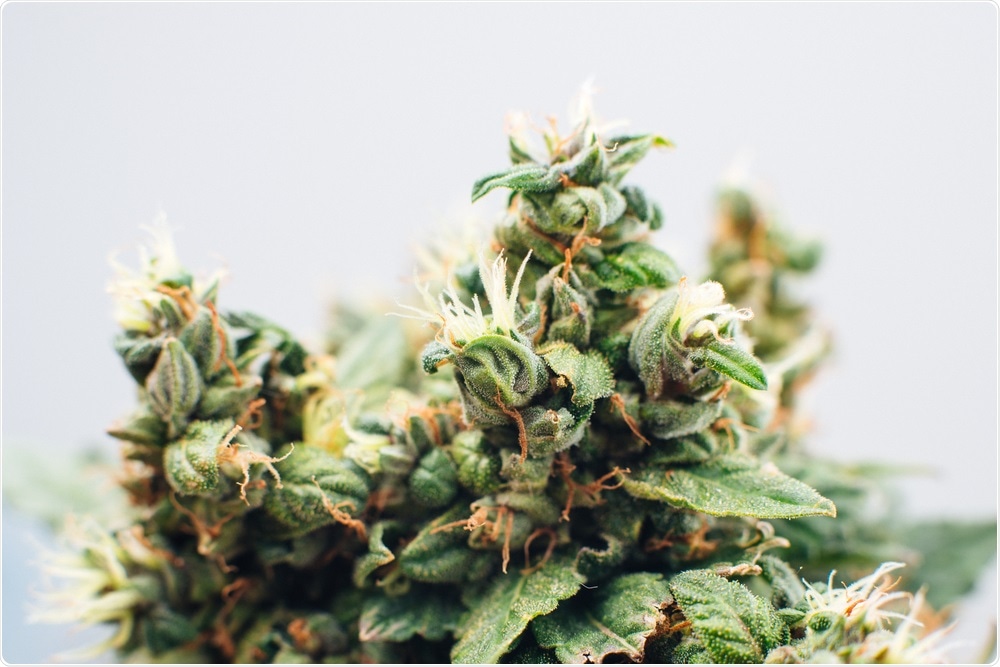The Cannabis sativa plant is commonly used for a variety of medicinal, agricultural, industrial and recreational purposes around the world. Despite its widespread use, there remains little genetic information that provides supportive evidence on its medicinal, chemical and/or psychoactive properties.
To this end, scientists in the US recently developed a physical and genetic map of Cannabis sativa to facilitate further investigation into the genetic and molecular mechanisms exhibited by this plant. The research was published in the journal Genome Research.
 Yarygin | Shutterstock
Yarygin | Shutterstock
Early genome assembly studies of Cannabis
While the biosynthesis of the cannabinoid compounds within the Cannabis sativa plant can vary greatly depending on the breeding practices being used, the two most abundant cannabinoids of cannabis are believed to originate from a single common source known as cannabigerolic acid (CBGA).
The production of tetrahydrocannabinolic acid (THCA) and cannabidiol acid (CBDA) is then initiated by the reaction of CBGA with THCA synthase and CBDA synthase, respectively.
Although early studies have determined that the expression of these two enzymes play a direct role in determining final cannabinoid content, there remains a limited understanding as to what mechanisms are responsible for the increased or lowered expression of these enzymes.
To resolve this uncertainty, two different genome assembly theories have been proposed. In one theory, both CBDA synthase and THCA synthase are mutually exclusive alleles. In the second theory, it is hypothesized that these two enzymes are closely linked. However, the specific cannabis strain will ultimately determine the level of each enzyme’s activity during biosynthesis.
In 2011, a group of researchers attempted to resequence the Finola (FN) hemp plant to determine the validity of these two theories; however, they remained unsuccessful as a result of high fragmentation.
Mapping the Cannabis genome
In the 2019 Genome Research study, the researchers coupled Pacific Biosciences (PacBio) long-read single-molecule real-time (SMRT) sequencing of genomic DNA (gDNA) from the female parent drug-type Purple Kush plant and the male parent FN hemp plant. Since the genetic maps of both the PK and FN plants were relatively consistent, the researchers decided to merge the two genetic maps for a complete analysis.
The analysis of the genetic map of both the PK and FN plants demonstrated a particularly strong tendency for both the presence of genes and recombination to occur near the ends of the chromosomes. Overall, the researchers found that the organization of genes in both the PK and FN plants closely resembled that which is observed in grain products like maize, barley and wheat. It is important to note that it is rare for this type of genetic pattern to be seen in non-grain products.
What was particularly unique about the genetic map produced in this study was the identification of the gene coding for cannabichromenic acid (CBCA) synthase. This discovery was based on the fact that the nucleotide patterns of this gene were 96% identical to the THCA synthase gene.
Enzyme activity of this gene was later determined by adding a CBGA substrate to clarified culture media, followed by an analysis of the products of this reaction by high-performance liquid chromatography (HPLC). The high accumulation of CBCA confirmed that the researchers had in fact identified the CBCA synthase encoding gene.
What does the research mean?
The identification of the gene that encodes for CBCA synthase provides a promising potential for a wide variety of future pharmacological studies. For example, the analgesic properties of CBC are the result of its ability to block the activity of ankyrin-type receptor potential channels that play a role in our perception of pain. CBC has also been associated with certain anti-inflammatory properties in the gastrointestinal system of mice.
By understanding the role of this particular gene in producing CBCA synthase, future breeding techniques can target strains that exhibit higher quantities in this gene in an effort to treat specific diseases such as irritable bowel syndrome and Crohn’s disease, both of which cause patients to experience high levels of intestinal inflammation and pain.
Acknowledgments
The work discussed in this article was financially supported by the Canadian Institutes of Health Research, as well as the National Institute of Health (NIH) National Institute of Allergy and Infectious Diseases.
Journal reference:
Laverty, K. U., Stout, J. M., Sullivan, M. J., Shah, H., Gill, N., Holbrook, L., et al. (2019). A physical and genetic map of Cannabis sativa identifies extensive rearrangements at the THC/CBD acid synthase loci. Genome Research 29; 1460156. DOI: 10.1101/gr.242592.118.